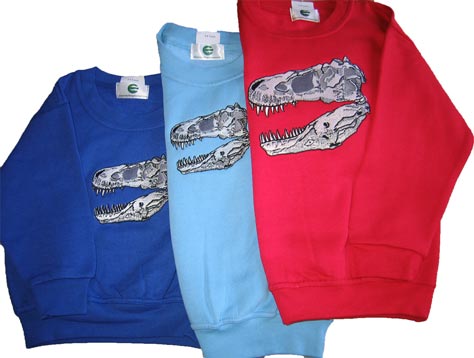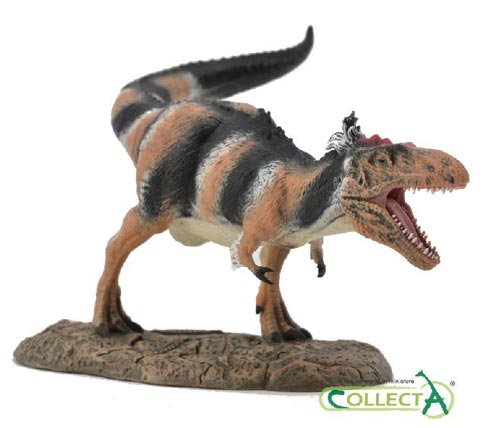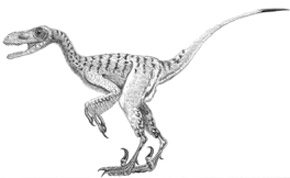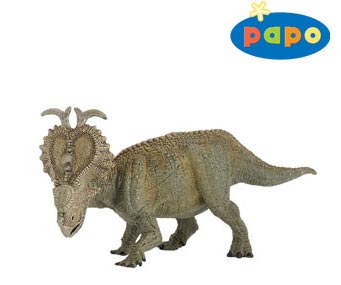Palaeontology Predictions in 2013 – How Did We Do?
Reviewing What Everything Dinosaur Predicted in January 2013
It’s that time of year again when we look back at our predictions made twelve months ago about what stories we would be covering in 2013. Each year, team members at Everything Dinosaur get together with a pot a tea and the last of the Christmas cake and come up with a forecast of what is likely to happen in the world of fossil collecting, palaeontology and dinosaurs. Back on January 3rd, we compiled a list containing eight predictions, now is the moment of truth, when we collectively look back to see how close (or how wide of the mark) we actually were.
Palaeontology Predictions
To read the January 3rd article: Everything Dinosaur’s Predictions for 2013.
1). New Genus of Horned Dinosaur from North America
The ceratopsian clade just gets bigger and bigger, our dinosaur experts estimate that more new types of North American horned dinosaur have been discovered and named in the first thirteen years of this century than in the whole of the 20th Century. This was one prediction that we were very confident about and sure enough, a number of specimens were named and described this year, although the fossil finds in most cases had taken place a few years earlier. Texas got an exciting new horned dinosaur in the shape of Bravoceratops polyphemus.
This dinosaur may have been as big as Triceratops (T. horridus), with an estimated skull length of around 2.2 metres and brow horns over one metre long, B. polyphemus is a member of the chasmosaurine group of horned dinosaurs and Everything Dinosaur reported on the announcement of this new dinosaur back in June.
Overall it was a good year for the chasmosaurines with the discovery of a baby chasmosaurus fossil, found in the famous Dinosaur Park Formation of Canada, which we also reported upon, this time in November.
To read about the discovery of Bravoceratops: New Giant Species of Ceratopsian Announced.
To see a picture and to read an article about the baby Chasmosaurus discovery: Fossils of Baby Horned Dinosaur Unearthed.
Everything Dinosaur also covered the auction of the “duelling dinosaurs from Montana”, although much of the interest was directed towards the fossils that may indicate that Nanotyrannus is a valid genus, the ceratopsian fossil preserved with this theropod, may turn out to represent a new species of chasmosaurine as well.
In addition, Everything Dinosaur reported on the unveiling of Nasutoceratops (N. titusi), a five metre long, horned dinosaur whose fossil remains had been found in southern Utah back in 2006. Good to see a new type of centrosaurine dinosaur too.
To read about Nasutoceratops: “Large Horn Face” Nasutoceratops
An Illustration of the New Centrosaurine Nasutoceratops (N. titusi)
Picture credit: Raul Martin
2). Jurassic Park in 3-D to Inspire Another Generation of Dinosaur Fans
In a year when the cinema was dominated by sequels, prequels and continuing franchises, Jurassic Park in 3-D grossed nearly $20 million USD in its opening week in the United States. At a time when speculation was rife about the future of the next Jurassic Park film (now due for release in 2015), Universal Studios can be quite happy with a total take of around $46 million USD, placing the film at number 69 in the U.S. highest grossing film chart for 2013. Interestingly, the new Walking with Dinosaurs in 3-D, released just a fortnight ago has taken $26 million USD despite very mixed reviews for this animated dinosaur adventure.
In the UK, we estimate that Jurassic Park in 3-D took around £400,000 GBP at the box office. We don’t have box office figures for Walking with Dinosaurs in 3-D available at the moment.
3). Milestones for Everything Dinosaur – What are We Going to be Doing?
Our third prediction concerned what Everything Dinosaur would be doing in terms of social media. It is always an act of bravado on our part to try to forecast exactly where we would be in terms of our company. After all, we would readily concede that we are not gifted business forecasters and attempting to predict our work on the dynamic social media channels of today is far from easy. Everything Dinosaur’s presence on line certainly grew in 2013, let’s recap on what we said and update our progress (or lack of it in some cases).
Six hundred and fifty Ezine articles approved and published – always a tough target, but we have produced a respectable total of several hundred articles on the Ezine platform. There are 560 articles by Everything Dinosaur published on Ezine (86% of target). Our viewing figures are up and the click through rate is also showing a positive upward trend.
One Thousand Facebook likes on Everything Dinosaur’s Facebook Page – we are not quite there yet, but we have 850 “likes” at the moment (85% of target). We are genuinely grateful for every “like” that we receive and we are happy in the knowledge that every single one of them has been earned, we have not opted for any “paid for service” where likes and things like Twitter follows can be purchased for a fee.
If you want to support Everything Dinosaur on Facebook, simply click the Facebook logo below and visit our Facebook page (please give our page a “like”).
Ezine Challenge completed 365 articles approved and published since February 25th 2012 – this was achieved, in fact we published our 365th article in this Ezine challenge a month ahead of schedule.
300,000 Video Views on Everything Dinosaur’s YouTube Channel – this target was also achieved, in fact it was smashed! The sixty-six videos on Everything Dinosaur’s YouTube video channel have been viewed over 592,000 times to date. When this original target was likely to be exceeded back in March, we set an ambitious target of half a million video views. This target was reached early in December, we are well on the way to smashing through the 600,000 views mark. Our thanks again to all our subscribers, commentators and loyal fans.
Back in December Everything Dinosaur’s Videos Reached Half a Million Views
Picture credit: Everything Dinosaur
To view Everything Dinosaur’s YouTube channel: Everything Dinosaur on YouTube.
Everything Dinosaur to join Pinterest with 1,000 re-pins – Everything Dinosaur team members have posted up a total of 1,571 pictures and articles on Pinterest to date. We have set up twenty-one boards and we have 106 likes with 160 followers so far. This social media platform is relatively new for us, but we have far exceeded our pinning target for the year. We shall see how these platforms develop over the months ahead. Once again, a very big thank you to everyone who has become a follower, video fan, subscriber, etc.
4). New Zealand to Hit the Headlines with a Prehistoric Animal Fossil Discovery
An intriguing prediction, one that certainly ranks as being a “sticking our collective heads over the parapet”, type of prediction, as there have been very few Mesozoic vertebrate fossil discoveries in New Zealand over recent years. A number of important fossil discoveries were made in New Zealand strata this year, although we are not aware of any new Dinosauria or marine reptile material beings found or major papers published.
The iconic Kiwi attracted a few headlines a couple of weeks ago when a paper published in a scientific journal challenged the long-held theory that this flightless bird evolved from the Moa family. Fossils found in Otago (South Island), suggest that New Zealand’s national symbol is descended from Australian migrants. These birds flew across the Tasman Sea more than twenty million years ago, once in New Zealand the gradually lost their ability to fly. However, we did not report on any major Mesozoic vertebrate discoveries from New Zealand and therefore we can’t claim this as one of our successes.
5). Controlled Cull of Saltwater Crocodiles in the Northern Territories
There were a number of fatal crocodile attacks in the Northern Territory this year, although there were calls for a cull of large crocodiles and a lot of lobbying of local politicians and government officials, we are not aware of any authority being given for an organised cull of these reptiles. The growing Saltwater crocodile population in the Northern Territory, the increasing number of crocodile close encounters and the number of attacks, sadly some of which have proved to be fatal, has led to many demands for a cull to take place. Perhaps 2014 will see a cull or indeed the controlled re-introduction of trophy hunting.
Remarkably, back in November we reported on a fascinating news story in which an angler fishing a lake in Hampshire claims to have spotted a small crocodile in the water.
To read about the suspected Hampshire crocodile: Fisherman Claims to Have Spotted Crocodile in Hampshire Lake.
6). New Clothing Range to be Introduced by Everything Dinosaur
In May, we were able to proclaim to the world the launch of our first clothing range with our own label. A range of quality sweatshirts were added to Everything Dinosaur’s clothing apparel and they have proved very popular.
2013 Saw the Launch of Everything Dinosaur’s Sweatshirt Range
Picture credit: Everything Dinosaur
Available in a range of attractive colours, these hard-wearing sweatshirts feature a stitched diagram of a Tyrannosaurus rex skull. The motif on the front of the sweatshirts is based on a real T. rex fossil skull. Look out for more exciting additions to Everything Dinosaur’s product portfolio over the next twelve months.
For dinosaur themed clothing and other gifts: Everything Dinosaur – Dinosaur Themed Clothing.
7). More Evidence of Endothermic Properties of the Dinosauria (Warm-blooded dinosaurs)
Whether or not the Dinosauria were endothermic or ectothermic remains a subject of great debate amongst palaeontologists. Did the Dinosauria, or at least the majority of them rely on external sources of heat to regulate their body temperature? Lots of data has been produced in the last two or three years on this subject, 2013 was no exception. Discoveries of dinosaur fossils that lived at high latitudes in the Northern Hemisphere have been made this year, along with some new finds of feathered dinosaur specimens from China.
In October, we published an article about the long necks of sauropods, it was speculated that those long necks could have been used to help regulate the body temperature of these massive herbivores – an interesting theory.
To read the article: Sauropods Using the Necks As Radiators.
Nothing definitive has been published to date, (as far as we know), just like a herd of sauropods, we think this debate is going to rumble on.
8). The Arab Spring Has Some Surprising Implications for Palaeontology
The political changes in north Africa during 2012 (and continuing), may have had an impact on a number of areas of scientific enquiry, but back in the early part of 2013 we predicted that palaeontology would benefit from the opening up of parts of north Africa that had been previously very difficult to access. Exploration of strata in areas that had been subject to much more restricted access, would, we thought lead to a number of exciting fossil finds. For example, with the peace settlement in Angola, one of the outcomes of the conflict’s resolution was that as more of the country was explored geologically, a number of new prehistoric animal fossil discoveries were made.
Everything Dinosaur team members predicted that there might be some exciting discoveries in North Africa, we even speculated that a new type of Arthropod or early Chordate might be excavated from the Nubian sandstone deposits of Libya.
There have been a number of important discoveries made by scientists working in North Africa this year. We did not have to wait too long to report on such a discovery, not from Palaeozoic strata but from much more recent sedimentary rocks, an exceptionally well preserved site that provides a fascinating insight into a prehistoric climate from around thirty million years ago. This significant discovery came in Libya, from a site approximately 500 kilometres south-east of Tripoli (Zallah Oasis in the Sirt Basin (central Libya)) and we wrote about it in February.
To read the article: Researchers discovery important Oligocene fossil site in Libya.
So all in all not a bad effort, some of our predictions were inaccurate, others proved to be quite perceptive. We will repeat this exercise again, this time looking forward into 2014 to see if we can predict what exciting adventures and news stories we will be writing about in the next twelve months.





















